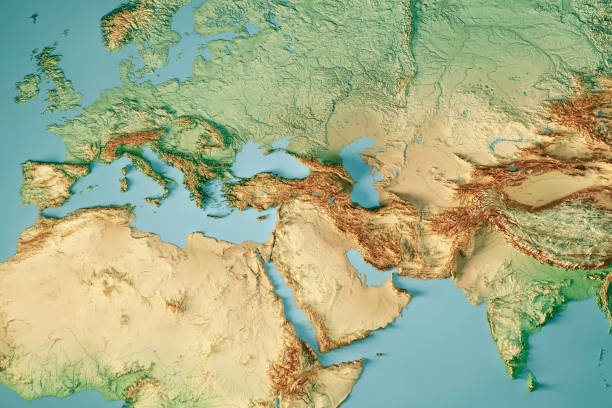In Africa, economic stability is key to progress, but the looming debt crisis threatens to disrupt this journey. The recent escalation of the debt crisis has cast a shadow over Africa’s economic prospects. The COVID-19 pandemic exacerbated existing vulnerabilities, pushing many African countries deeper into debt as they grappled with the health and economic fallout. According to the United Nations Conference on Trade and Development (UNCTAD), Africa’s total public debt surpassed $1.8 trillion in 2022, with several countries facing high debt distress levels. The burden of servicing this debt diverts scarce resources away from critical sectors such as healthcare, education, and infrastructure, impeding long-term development and exacerbating social inequalities.
Several initiatives provide temporary relief, but long-term solutions require structural reforms. This includes investing in education and technology, enhancing regional cooperation, and renegotiating debt terms to reduce dependency on foreign loans.
Africa’s trajectory towards economic development has been hindered by a series of external shocks, leading to a rapid increase in debt levels. With a population comprising nearly one-sixth of the global populace, Africa’s role in the world economy is increasingly significant. However, events such as the 2008 global financial crisis, the recent COVID-19 pandemic, and the conflict in Ukraine have exposed the continent’s vulnerabilities and underscored the need for greater resilience and self-reliance.
These crises have impeded Africa’s growth prospects and exacerbated its debt burden, both at continental and national levels. The USD 1.8 trillion debt incurred in 2022 is a staggering 183% increase since 2010, outpacing the growth rate of GDP in dollar terms. The repercussions of these debt levels are profound, with nearly 40% of debt concentrated in Northern African countries, exacerbating challenges such as food insecurity and limited access to critical imports.
While external factors have contributed to Africa’s rising debt, internal factors, such as the urgent need for food and healthcare during wars and crises, have also played a significant role. The COVID-19 pandemic prompted many African countries to increase borrowing to finance healthcare, procure personal protective equipment (PPE), and acquire vaccines, further exacerbating debt levels.
The debt burden is compounded by a complex creditor landscape, with a growing share of debt held by private creditors. This shift presents challenges in coordinating debt restructuring efforts and increases borrowing costs, making it harder for African nations to service their debt obligations. Moreover, the high cost of financing, with average borrowing rates in Africa standing at 11.6%, significantly higher than the US benchmark, constrains development spending, diverting resources from critical sectors such as health and education.
African leaders have called for increased contributions to the IDA, a World Bank facility that provides low-interest loans to developing nations. The goal is to secure at least $120 billion in pledges from donor countries. These contributions would provide crucial financial support to African economies facing deepening development and debt crises.
A recent analysis by the IMF proposes actionable measures to prevent this crisis from materializing, outlining five key policy actions for African governments to safeguard public finances while advancing development objectives.
Reorienting fiscal policy towards a credible medium-term strategy, shifting away from short-term objectives, and undertaking fiscal consolidation to rein in debt levels, with IMF analysis indicating the need for most countries to reduce fiscal deficits by 2 to 3 percent of GDP. Drawing from historical precedents, this adjustment is deemed feasible for two to three years. However, diverse country contexts necessitate tailored approaches, with some economies requiring additional measures such as debt reprofiling or restructuring.
Shifting towards revenue-centric fiscal measures, supplementing expenditure cuts with strategies to boost domestic revenue. Recommendations include eliminating tax exemptions and modernizing tax systems, particularly in countries with low initial tax levels. Examples from The Gambia, Rwanda, Senegal, and Uganda demonstrate the potential for significant revenue increases through targeted reforms.
Bolstering fiscal governance mechanisms to enhance the implementation of fiscal plans. A robust medium-term fiscal framework, coupled with tools to assess and manage fiscal risks, is essential for effective expenditure control. Strengthening legal frameworks, improving fiscal reporting, and empowering audit institutions mitigate budgetary slippages and ensure transparent fiscal management.
Anticipating and addressing public resistance to reform efforts by emphasizing long-term benefits and fostering transparency. Strategic communication campaigns, outlining the rationale behind reforms and their equitable distributional impacts, are crucial for garnering public acceptance. Governments must demonstrate a commitment to efficient, fair, and transparent use of public funds to build trust and credibility.
As Africa grapples with these challenges, reforms addressing multilateral and private creditors are imperative. These reforms are essential for Africa’s financial stability achieving sustainable development and meeting the UN’s Sustainable Development Goals (SDGs).


